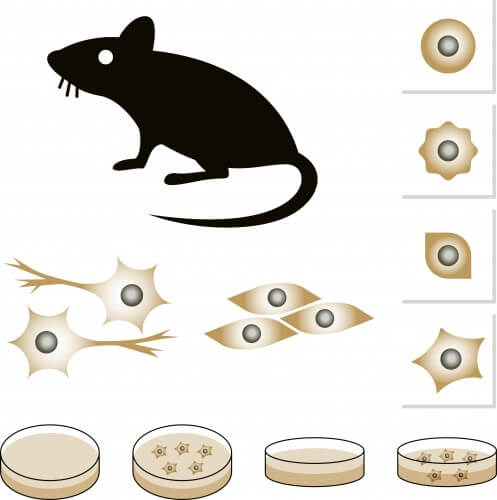The stem cells of the blood system are leading the biological research of adult stem cells, and the clinical use of bone marrow transplants which save tens of thousands of people every year. And yet, the basic understanding of these stem cells depends on being able to identify them directly in model animals for research purposes.

A new study, led by Dr. Roi Gazit from the Faculty of Health Sciences at Ben-Gurion University of the Negev, was able to identify unique genes that are expressed in a very specific way, and to create a mouse-model in which the stem cells of the blood system are marked, which are the continuous source of all blood cells and the vaccine for human life
The stem cells of the blood system are leading the biological research of adult stem cells, and the clinical use of bone marrow transplants which save tens of thousands of people every year. And yet, the basic understanding of these stem cells depends on being able to identify them directly in model animals for research purposes. Leading laboratories in the world have defined many external markers that allow a good identification of the stem cells of the blood system while combining at least a dozen antibodies.
In order to identify specific genes for the stem cells of the blood system, the researchers created a database of the expression of all the genes known in the different types of cells in the blood system. The cells were isolated with the help of FACS which allows sorting according to multiple markers and obtaining defined cell populations in their entirety. The quantification of the expression levels of all genes was carried out with the help of microarrays, and thanks to the uniformity of the method, the researchers were able to make a direct comparison between the types of mature cells, the progenitors and the stem cells of the blood system. From this we can predict a large number of genes that are active only in the stem cells.
The researchers tested the reliability of the method in separate experiments and focused on a few dozen genes that showed a very specific expression pattern. Of these, the Fgd5 gene will be selected to create the reporter mouse. With the help of genetic manipulation, part of the original gene was changed to a red fluorescent protein (mCherry), so that in the mouse the cells expressing Fgd5 will be colored. The transgenic mouse revealed that the gene itself has an essential role in embryonic development (a topic still under study), but is not necessary for the development or the stem cell activity of the blood system.
A series of experiments showed that in the Fgd5-mCherry reporter mouse, the stem cells of the blood system were labeled in a very specific way. The labeled cells were isolated by FACS based on the unique marker alone and showed full transplantability over a long period of time, just like stem cells isolated by multiple markers. The marking of the stem cells with the help of Fgd5-mCherry is kept focused only on the stem cells even after transplantation. The researchers went on to show that the labeled cells contain all the long-term engraftment capacity in the mouse, and completed the formal definition of the stem cell population of the blood system. A secondary reporter strain they created also offers the possibility of further genetic experiments by deleting genes directly in the blood stem cells. The discovery of the specific Fgd5 gene and the ability to create a mouse model allow for the first time to identify and study the stem cells according to a single reliable marker.
The unique reporter mouse developed in this study will allow direct identification of the stem cells of the blood system in various situations. It is worth noting that despite the proven success of bone marrow transplantation, we are still limited by the suitability of the donor and the amount of stem cells in the donation. Improving the biological understanding of adult stem cells is expected to allow a more beneficial use of such cells for regenerative medicine. In addition, various cancerous tumors - and especially leukemias - share profound characteristics with stem cells, which still await specific research and the development of innovative treatments.
The study was published in the Journal of Experimental Medicine. Roi Gazit is a researcher at the Faculty of Health Sciences, Ben-Gurion University of the Negev and was a post-doctoral student in Derek Rossi's laboratory at Harvard Medical School, Boston, when the research began. A number of other researchers from Derek Rossi's lab took part in the study: Votro Avina and Pankag Mandel, from Dr. Leslie Silverstein's lab: Cesar Numbla-Arrieta, as well as Eyal Ben-Zvi (he was at Harvard, recently accepted to the Hebrew University in Jerusalem, Hadassah Ein-Kerem).
